Metal Warriors walked a difficult path. Fresh off the cult favorite
Zombies Ate My Neighbors, developers Dean Sharpe and Mike Ebert conceived
Metal Warriors as their homage to mecha anime like
Mobile Suit Gundam and
Armored Trooper Votoms. LucasArts greenlit the idea, and the project went through bug-testing and development with surprising ease.
The problem came in getting the game to market. LucasArts initially struck a publishing deal with Nintendo, who discarded the game and countless other Super NES titles as new systems emerged in early 1995. Konami scooped it up for a mid-1995 release, but the production run was a mere 50,000 copies, and it was soon lost in the utter chaos of a year where multiple new consoles launched and the established ones saw their strongest libraries ever.
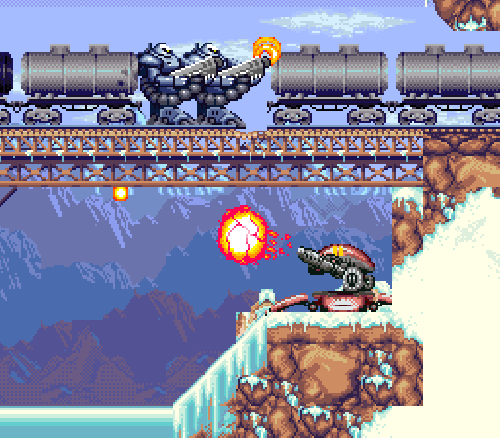
Metal Warriors inevitably provoked comparisons to
Cybernator and the rest of the
Assault Suits series. They’re both tales of robot warfare wages in space and on the earth, with semi-realistic mecha that clank and lumber just as much as they jet around with rocket packs or swing beam sabers (or lightsabers, as we can probably call them without fear of LucasArts suing themselves).
Metal Warriors casts its player-named character, Stone by default, as the linchpin in a struggle against the dictator Venkar Amon and his Dark Axis Forces. No benevolent leader would name his army the Axis, so there’s plenty of fearsome opposition in the enemy mecha and their pilots.
Yet Metal Warriors shrugs away all ripoff accusations. In an interview from the second Untold History of Japanese Game Creators, Sharpe and Ebert reveal that they were inspired more by Blaster Master and the freedom it gave players in letting them exit a vehicle at will. Metal Warriors does the same, and Stone can eject from any mecha at any time, equipped only with a jetpack and a dinky firearm that damages only other tiny, robot-less humans. It turns Metal Warriors into less of a straightforward action game and more of a giant puzzle, as you’re driven to leave your protective mock-Gundanium frame several times in each stage. Or you can just see how far you can survive in puny pilot form. True freedom is often suicidal.
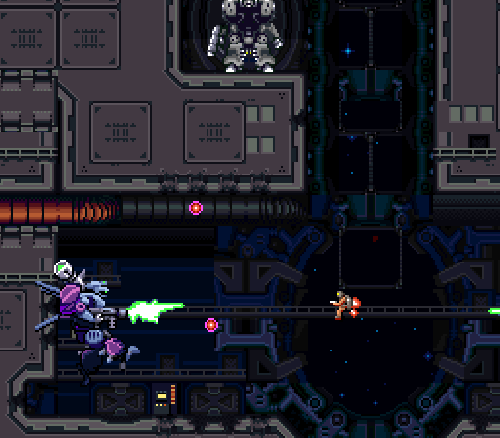
The designers didn’t stick to routine robots, either. Artist Harrison Fong devised an inventive roster of half a dozen different mecha. The Nitro and the Havoc are standard humanoid types, rushing and jetting and firing much like an Assault Suits machine, but it’s hard to find stock anime equivalents for the rest of the lineup. There’s Prometheus, a plodding bipedal tank that makes up for its slow pace and lack of jumping by sporting a flamethrower, mines, a shield, and cannons that let player control just when a shell fragments. There’s the Ballistic, which moves by rolling into a ball, charging up and smashing into things, though it can only fire when stationary. There’s the Drache, a flying ship with a dive attacks and eight-way gunfire. And there’s the Spider, which does the best it can by crawling on any surface and immobilizing enemies. It’s okay, Spider. You’re still an essential part of the game.
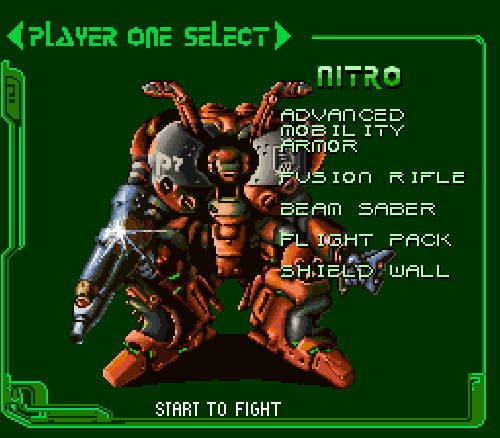
Instead of straightforward action stages, Metal Warriors’ battlegrounds invite exploration. You’ll have to backtrack and poke around in search of different robots, whose new abilities either make things easier or make things actually winnable. You’re tasked with defending a battleship with the Prometheus, rescuing a spy from a Dark Axis lab, shooting your way up a skyscraper, and dismantling enemy cannon-mechs that crawl through the underground wreckage of a city like giant steel maggots. It’s a heavily detailed game in both looks and design, right down the spent casings tumbling from the Havoc's gun, and if the soundtrack isn’t as catchy as some other mecha shooters I could name and already have, it at least bolsters the combat intensity.
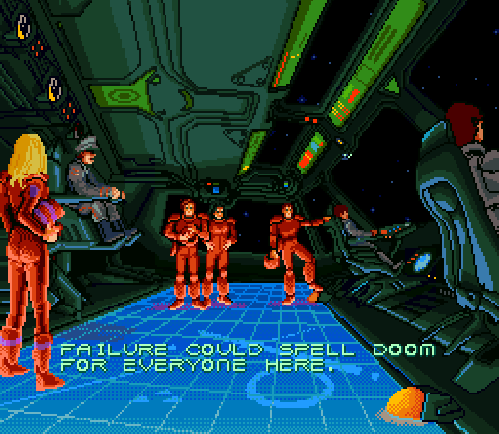
For a game inspired by anime series about grim space wars, Metal Warriors is surprisingly light on the melodrama. It has some lengthy cutscenes, but they’re more about mood and imagery: Nitro mechs swooping into spaceship docking bays, cockpits sealing shut, spacesuited officers standing on floor map screens while a commander chatters from a mobile chair above. There are no character arcs, no bitter vignettes on the ugliness of war, no likable but clearly doomed compatriots, no recurring half-honorable rival to face the hero even after the war is ended. The best you can do is have some fun renaming the protagonist and making the most of the game’s lack of commas.
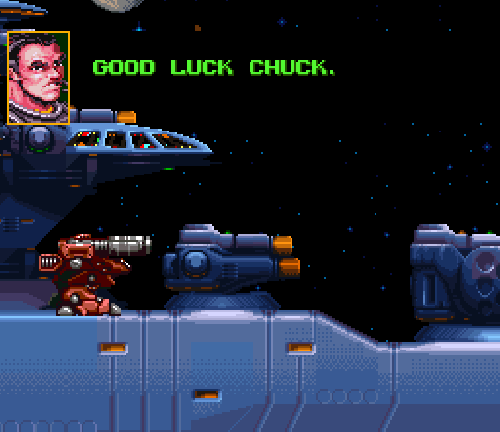
Metal Warriors might not need that. It never stands up and recites platitudes about the inevitable inhumanity of the conflict, but it never glorifies it either. Each mission is just another step in the overarching war, and the backdrops of destroyed cities and wrecked machines tell their own story. Even the occasional praise and promotions you receive seem stiff and hollow. You’re just a pilot with a mission, and in that professional detachment Metal Warriors says something even more depressing than an anime season’s worth of tragedy and bloodshed.
Then again, Metal Warriors can be appreciated just for its two-player mode. Players stalk each other in random split-screen stages where they can eject and commander new machines just as in the regular game. It’s a fantastic competition that drives players to learn the machines’ true strengths, while random power-ups keep it from ever getting predictable. It even overshadows the one-player campaign, which in all its solid design can’t match those moments when a Ballistic droid tries to outflank a Prometheus while dodging that nasty flamethrower—or when every machine is destroyed and it all comes down to two little plots chasing each other in a duel of jetpacks and handguns.
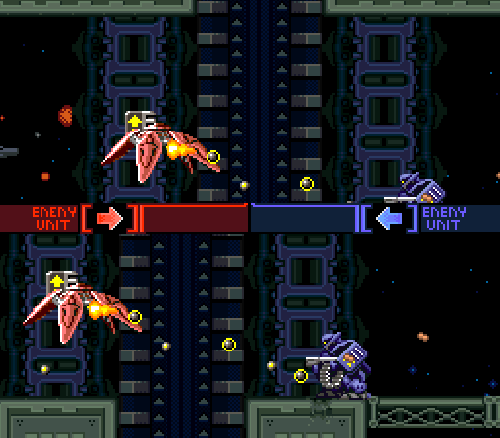
A pity that so few got to experience it back in 1995. Metal Warriors’ short production run made it a rare sight outside of rental shops. I can personally attest to that. I borrowed Metal Warriors from Blockbuster and then spent days calling retail stores. I eventually found a Toys R Us with one copy left for $74.99. That was normally a price I’d pay only for an RPG that would occupy me for half the year, but Metal Warriors was worth it. It was also the cheapest I’d ever see the game, as its rarity drove up prices just a decade later.
So why not bring it back? Reports of a Game Boy Advance revival led nowhere, but recent years have seen many 16-bit cult classics reissued with deluxe packaging. In fact, Zombies Ate My Neighbors and Ghoul Patrol just emerged with new digital releases and a fancy Limited Run Games box set. Metal Warriors may not have quite the same caliber of recognition among Super NES standouts, but it’s every bit as impressive of a game—especially with two players aboard. Perhaps the rights are tied up with Konami.
Metal Warriors is that rare hybrid that rises above its influences. It’s close enough in nuts and bolts to an Assault Suits game that fans even started a rumor that it was released in Japan (it wasn’t) as Assault Suits Gideon (it wasn’t), but its complex stages, swappable machines, and marvelous versus mode make it a different creature overall. Whether it’s affordably reissued or condemned to wander a land of absurd eBay prices and emulation, Metal Warriors inevitably rises above it all.







No comments:
Post a Comment